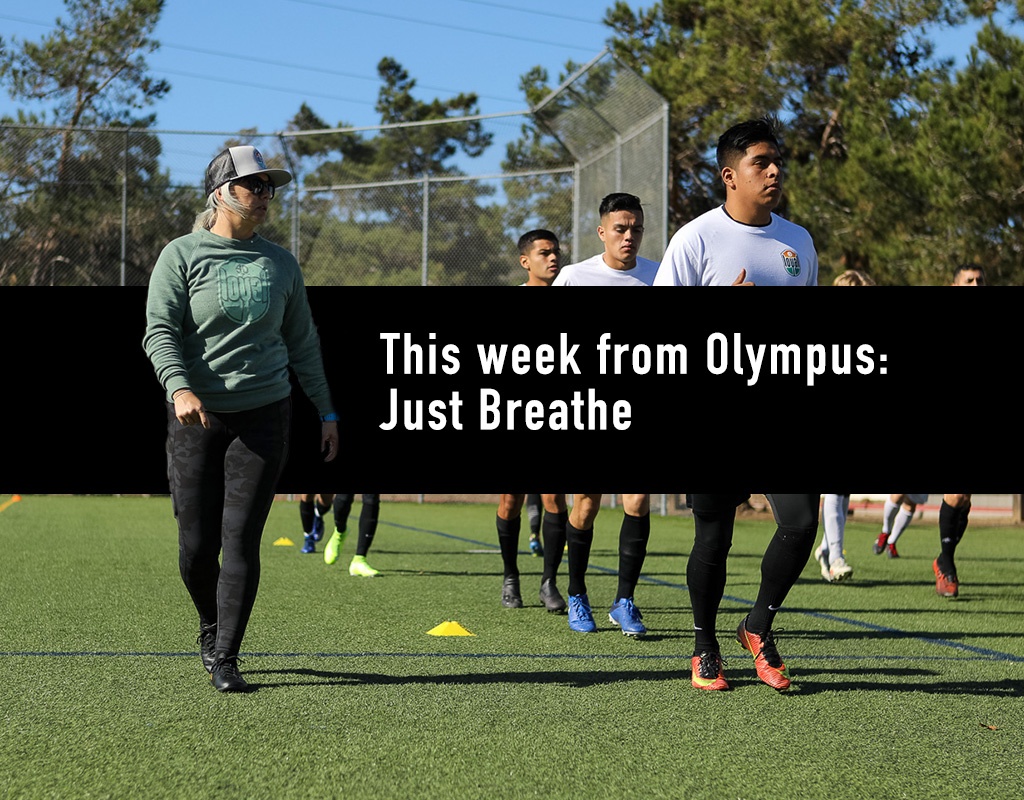As athletes around the world begin to ramp up their training, deep core strength and stabilization are more important than ever. This week, Olympus M
As athletes around the world begin to ramp up their training, deep core strength and stabilization are more important than ever. This week, Olympus Movement brings families and athletes valuable knowledge.
Keep reading to learn how your breathing plays a vital role in your body’s athletic performance.
Take it away, Annemarie!
BUILDING THE FOUNDATION: THE DEEP CORE STABILIZING SYSTEM
by Annemarie Alf, PT, DPT, CSCS, SFMA
Do you know how to breathe? Did you know it could improve your performance? Learning how to activate your diaphragm and creating intra-abdominal pressure will lead to increased activation of the deep core stabilizing system. This is key for protecting the spine and leading to improved movement patterns and therefore increased power and performance overall.
Core stability is NOT achieved purely by strength of abdominals, spinal extensors, gluts or any other muscles, rather core stabilization is accomplished through precise coordination of these muscles to generate intra-abdominal pressure (IAP). This is regulated by the CNS- the brain.
Our sagittal stabilization begins at 6 weeks of life. Our spinal (core) stabilization is attributed to muscle complex called the Deep Stabilizing System of the Spine (DSSS).
What is the deep spinal stabilizing system? It is more than just the ‘deep muscles.’
Deep Spinal (core) stabilization includes: multifidi, deep neck flexors, diaphragm, abdominal wall, pelvic floor. When these muscles are automatically activated prior to movement, a stable base is generated. In proper stabilization, activity does not involve only one muscle but the whole chain working together.
What is most important is the quality of stabilization?
Functional stabilization is necessary for safe, purposeful movement.
Through postural – locomotion kinematic chains, nearly every muscle is involved in stabilizing function.

How to create proper IAP: intra-abdominal pressure?
–> Its distribution occurs with correct activation of diaphragm.
1. Physiological movement of the diaphragm should be part of all movement and exercise.
2. Increases equally in all directions
–> The ideal position of the Spine, Chest, and Pelvis = stacked/ parallel. You do NOT want ‘open-scissors’ of the diaphragm OR a rib- flare.
Posture and respiration form one functional unit.
The diaphragm has 3 functions:
1. Respiratory
2. Postural/ stabilizing function
3. Coordination of both

Keys to Success: Achieving sagittal stabilization:
1. Spine axially elongated/ uprighted
2. Chest in expiratory position (rib cage down)
3. Parallel position of diaphragm and pelvic floor
4. Equal distribution of IAP independent on respiration
5. Equal activation of abdominal wall
Quality over quantity!
In order to improve and achieve optimal movement: Quality > quantity. Muscles must be trained in both their stabilization and dynamic (movement producing) functions. Movement efficiency = optimizing the distribution of internal forces of muscles that act on each segment of the spine and/ or any other joints or segments
ANY PURPOSEFUL MOVEMENT IS PRECEDED BY THE AUTOMATIC ACTIVATION OF THE POSTURAL STABILIZERS.
“If breathing is not normalized, no other movement pattern can be” – Karel Lewitq
Want an evaluation/ assessment of your ability to create IAP and activate you diaphragm for stability prior to movement? Email us at: [email protected] to schedule an appointment.
